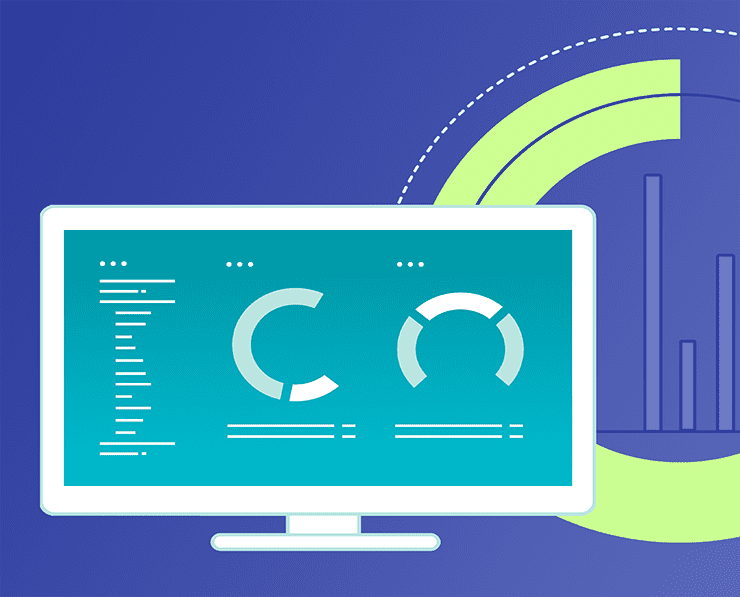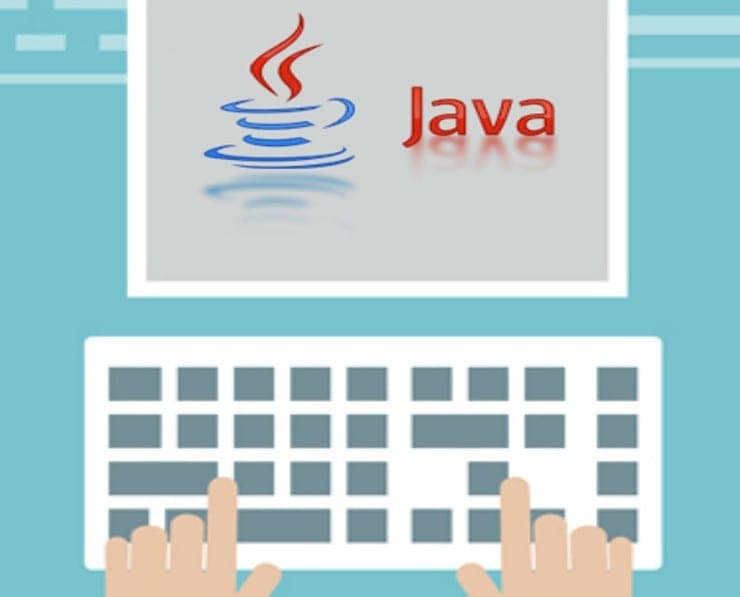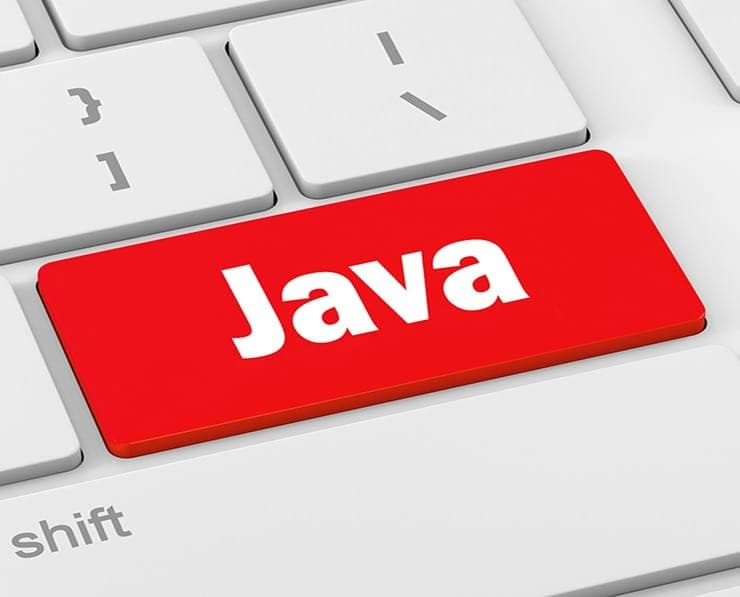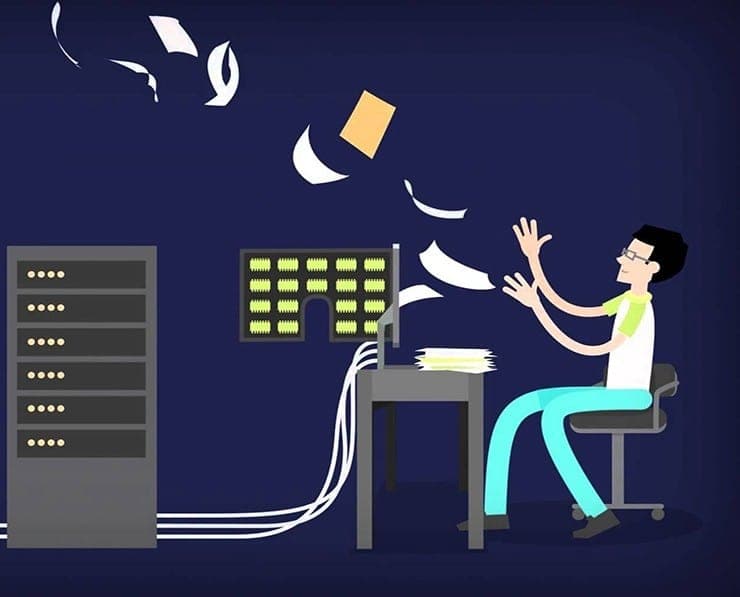Student Feedback
1z0-062: Oracle Database 12c: Installation and Administration Certification Video Training Course Outline
Module 1: Database Concepts And ...
Module 2: Memory Structure
Module 3: Tables
Module 1: Database Concepts And Tools
1z0-062: Oracle Database 12c: Installation and Administration Certification Video Training Course Info
Hands-On Oracle 1z0-062 12c Installation and Administration Course
Gain practical skills in deploying, maintaining, and troubleshooting Oracle Database 12c environments effectively.
What You Will Learn From This Course
• Understand the architecture and components of Oracle Database 12c
• Learn the process of installing and configuring Oracle Database 12c
• Gain the ability to manage memory, processes, and storage structures
• Perform startup and shutdown procedures for database instances
• Configure and manage network environments using Oracle Net Services
• Manage tablespaces, data files, and undo/redo configurations
• Understand user management, roles, and privileges for secure administration
• Learn to monitor database performance and identify optimization opportunities
• Gain practical experience in database maintenance and troubleshooting
• Develop hands-on skills in Oracle 12c administration using tools like SQL*Plus and Enterprise Manager
Learning Objectives
The primary objective of this course is to provide a comprehensive understanding of Oracle Database 12c installation and administration. It aims to equip learners with both theoretical knowledge and practical skills to efficiently manage an Oracle database environment. Students will gain a solid understanding of the database architecture, including how memory structures, background processes, and storage elements interact to support database operations.
Participants will learn to perform database installation and configuration tasks using Oracle Universal Installer and Database Configuration Assistant. They will understand how to start up and shut down a database instance, manage initialization parameters, and configure networking components using Oracle Net Services.
Another core objective is to train learners in database management practices such as storage management, undo and redo handling, backup and recovery fundamentals, and user administration. The course also emphasizes monitoring, performance tuning, and troubleshooting methods to maintain an optimal and secure database system. By mastering these skills, learners will be fully prepared to operate Oracle Database 12c effectively and meet the requirements of professional database administration roles.
Target Audience
This course is designed for individuals aiming to develop a professional understanding of Oracle Database 12c administration. It is ideal for database administrators who want to enhance their skills or prepare for the 1Z0-062 certification exam. System administrators responsible for managing Oracle environments will find the course valuable for understanding installation and maintenance procedures.
IT professionals transitioning into database administration roles can use this training as a foundational program to build their Oracle expertise. Developers and data engineers seeking insight into database infrastructure and management will also benefit from the topics covered. Students pursuing a career in data management or enterprise systems will gain essential practical knowledge through this training.
In addition, technical support specialists and system engineers who interact with database environments will find that the course improves their ability to troubleshoot and manage Oracle systems effectively. Anyone interested in understanding how enterprise-level databases are installed, configured, and maintained will find the content relevant and beneficial.
Overview
Oracle Database 12c introduced significant innovations in database architecture and management that enhance performance, scalability, and flexibility. The course on installation and administration focuses on providing a detailed understanding of these core features while guiding learners through the essential processes of configuring and managing an Oracle environment. It begins with an introduction to Oracle Database architecture, describing the logical and physical structures that make up the system. This includes tablespaces, data files, control files, and redo logs, as well as the instance components such as memory areas and background processes.
Students will explore the methods of installing Oracle Database 12c on supported platforms, including pre-installation requirements, configuration tasks, and post-installation verification. They will learn to use Oracle Universal Installer to deploy the software and Database Configuration Assistant to create and configure databases. During this process, learners will also understand the significance of various configuration parameters, directory structures, and system resource requirements.
An important part of the course involves learning how to start up and shut down the database in different modes and understanding what happens during these processes. This includes the roles of background processes like SMON and PMON, the handling of system memory, and the initialization sequence. Monitoring tools such as alert logs and trace files are introduced to help students analyze database behavior and detect operational issues.
Another focus of the course is network configuration using Oracle Net Services. Learners will study the principles of client-server communication and the setup of listeners and naming methods. By configuring listener.ora and tnsnames.Through ORA files, students will gain practical skills in enabling and managing database connectivity. They will also learn troubleshooting techniques for common connectivity problems.
The course provides detailed coverage of storage management, including the creation and maintenance of tablespaces, the management of data files, and the implementation of Oracle Managed Files. Students will understand how Oracle organizes data into logical and physical storage structures, the difference between bigfile and smallfile tablespaces, and how to maintain optimal storage allocation. These concepts are essential for maintaining database performance and ensuring efficient resource utilization.
Undo and redo management is another key area explored in the course. Learners will examine how Oracle maintains data consistency and recovery capabilities using undo tablespaces and redo logs. They will understand how transactions use undo data to provide read consistency and how redo logs ensure data durability in case of failures. The module explains the configuration of undo retention, checkpoint processes, and archive log modes, which are vital for recovery operations.
Security and user management form another integral part of the course. Students will learn to create and manage users, assign privileges, and implement roles for structured access control. The use of profiles to manage password policies and session limits will also be covered, enabling learners to apply best practices in securing database environments. The course also discusses auditing methods available in Oracle 12c to track user activities and maintain compliance.
Performance monitoring and tuning are addressed through the introduction of tools like Oracle Enterprise Manager and dynamic performance views. Learners will gain insight into identifying performance bottlenecks, analyzing wait events, and managing memory allocation effectively. These skills help administrators maintain high database performance and stability.
By the end of this course, students will have a thorough understanding of how to manage the lifecycle of an Oracle 12c database, from installation and configuration to ongoing administration, performance monitoring, and maintenance. They will be able to carry out everyday administrative tasks such as managing storage, performing backups, and ensuring data availability and integrity.
Prerequisites
Before enrolling in this course, learners should have a basic understanding of database concepts, including tables, indexes, and transactions. Familiarity with SQL language and basic querying is recommended to help understand certain administrative tasks and database operations. A general understanding of operating systems, particularly Linux or Windows Server environments, is also helpful, as these are commonly used for Oracle Database installations.
Participants should be comfortable working with command-line interfaces and navigating file systems, as Oracle administrative tools often require shell-based commands. Prior experience with any relational database management system, even at a beginner level, will be advantageous. Knowledge of networking basics, such as client-server communication and IP configuration, will help in understanding Oracle Net Services and network setup.
A system with sufficient hardware resources, such as virtual machines for practice, is essential for hands-on learning. Students are encouraged to set up a test environment to follow along with installation and configuration exercises. No advanced programming knowledge is required, but an analytical approach to problem-solving and attention to detail will contribute greatly to mastering the administrative concepts covered in this course.
Course Modules / Sections
The Oracle Database 12c: Installation and Administration training course is divided into several comprehensive modules designed to provide both conceptual and practical understanding of database management. Each section focuses on specific administrative domains, guiding learners through every stage of working with Oracle 12c databases.
The first module introduces the architecture of Oracle Database 12c, providing detailed knowledge of its components, memory structures, and background processes. Students will study how these elements interact to ensure efficient operation and stability of the database. This foundation helps learners grasp the internal mechanisms of Oracle and prepares them for advanced administrative tasks.
The second module covers the installation and configuration of Oracle Database 12c. It explains pre-installation requirements, hardware and software compatibility checks, and the use of the Oracle Universal Installer. Participants learn to configure essential directories, manage environment variables, and create databases using the Database Configuration Assistant. This section also explores post-installation steps, such as setting up Oracle services, validating configuration files, and managing listener settings.
The third module focuses on the Oracle network environment. Students are introduced to Oracle Net Services and learn how to configure and manage listeners, client connections, and naming methods. They also explore shared server configurations, network service names, and methods for troubleshooting connectivity problems.
In the fourth module, memory and process management are discussed in depth. Learners examine the various memory components of the Oracle instance, including the System Global Area (SGA) and Program Global Area (PGA). The section also covers automatic memory management, manual tuning, and monitoring techniques using dynamic performance views.
The fifth module addresses storage management. Students learn about the logical and physical structures of storage, such as tablespaces, data files, and segments. They practice creating, altering, and maintaining tablespaces, configuring automatic segment space management, and implementing Oracle Managed Files for easier file administration.
The sixth module examines undo and redo management. It explores how Oracle maintains data consistency and recoverability through undo tablespaces and redo logs. Students learn to configure undo retention, manage rollback segments, and operate databases in ARCHIVELOG mode for recovery purposes.
In the seventh module, backup and recovery principles are introduced. Learners become familiar with Recovery Manager (RMAN), its commands, and how to perform full and incremental backups. The module also explains recovery types, the Fast Recovery Area configuration, and the role of the Data Recovery Advisor in assisting administrators during restoration operations.
The eighth module covers data movement and migration. It teaches how to transfer data using tools such as Data Pump, SQL*Loader, and external tables. Learners will understand the scenarios where each method is most effective, including data import, export, and transportable tablespaces.
The ninth module deals with user and security management. Students learn to create and manage database users, assign system and object privileges, define roles, and configure password and resource management through profiles. It also explains authentication types, auditing features, and the application of security best practices.
The final module emphasizes database monitoring, maintenance, and performance optimization. Students learn how to use Oracle Enterprise Manager and performance views to monitor workloads, identify performance issues, and implement tuning solutions. The section also discusses the use of advisors and the importance of preventive maintenance activities such as gathering statistics and rebuilding indexes.
Each module is carefully structured to build upon the previous topics, ensuring a smooth progression from foundational knowledge to advanced administrative capabilities. Learners will complete the course with the ability to install, configure, administer, and maintain Oracle Database 12c systems effectively.
Key Topics Covered
The Oracle Database 12c: Installation and Administration course covers a broad range of essential topics required to understand and manage enterprise-level databases. The training begins with an exploration of Oracle architecture. This topic provides a clear picture of how logical and physical structures interact. Students study key architectural components such as tablespaces, control files, data files, and redo logs, as well as the role of memory areas and background processes that ensure smooth operation.
Installation and configuration form another significant portion of the course. Learners are guided through every step of installing Oracle Database 12c using the Oracle Universal Installer, including environment preparation, setting up Oracle home directories, and creating databases through DBCA. The section also covers essential configuration parameters, directory paths, and security practices to ensure that the database functions efficiently after installation.
Network configuration is a crucial topic that ensures reliable communication between database servers and clients. Participants study Oracle Net Services, listeners, naming methods, and service registration. They learn to create and manage configuration files such as listener.ora and tnsnames.ora, and understand troubleshooting techniques for connection issues.
Memory management is addressed in detail, covering both automatic and manual memory configuration. Learners study the function of the SGA, PGA, and various memory pools. They practice monitoring memory performance using V$ views and tools available within Oracle Enterprise Manager.
The course also emphasizes storage management. Students learn to design and maintain tablespaces, manage data files, and implement Oracle Managed Files. They explore automatic segment space management, temporary tablespaces, and the significance of undo and redo in maintaining data integrity. Understanding undo retention and redo log configuration helps students handle transactions efficiently and recover from system failures.
Backup and recovery topics teach how to safeguard data against loss. RMAN is introduced as the primary tool for performing and managing backups. Learners understand the structure of backup sets, image copies, and how to restore or recover a database after failures. Configuration of the Fast Recovery Area and performing incremental backups are also included.
Data movement is covered through various tools, including Data Pump, which facilitates efficient import and export of data. Learners also explore SQL*Loader for bulk data loading and external tables for handling large datasets.
Security and user management topics help learners establish a secure environment by creating and managing users, defining privileges, and applying roles. They learn about authentication methods, auditing, and enforcing password and resource management through profiles.
Performance tuning and monitoring form an important part of the course. Students learn to identify performance bottlenecks using dynamic performance views, analyze wait events, and use advisors for optimization. The course highlights how to maintain system health through preventive maintenance, including gathering statistics and monitoring performance metrics.
Additional topics include database maintenance activities, managing statistics, performing upgrades, and understanding new features introduced in Oracle Database 12c. The focus throughout is on providing the skills needed to ensure database availability, integrity, and reliability.
Teaching Methodology
The teaching approach for this course is based on a combination of theoretical instruction and practical exercises designed to reinforce understanding through application. The methodology ensures that learners not only understand key concepts but also gain hands-on experience to apply them in real-world scenarios.
Each session begins with a conceptual overview that introduces the main topics and their relevance in database administration. Lectures are supported with detailed explanations, visual diagrams, and demonstrations to help learners grasp the internal workings of Oracle Database 12c. This theoretical foundation establishes the context for the practical exercises that follow.
Hands-on lab sessions are a core component of the training. Learners perform installations, configurations, and administrative tasks using Oracle software in controlled environments. By completing these labs, students develop confidence in executing real-world operations such as creating databases, managing tablespaces, configuring listeners, and performing backups. The use of virtual machines or cloud-based environments enables learners to simulate enterprise setups without the risk of affecting production systems.
Instructors emphasize best practices at every stage of the learning process. Students are encouraged to follow Oracle-recommended procedures for installation, configuration, and security. This approach not only prepares learners for certification exams but also aligns with professional database administration standards.
Interactive discussions and group activities are integrated into the course to promote collaboration and knowledge sharing. Learners analyze case studies and solve simulated problems that reflect real administrative challenges. These exercises encourage critical thinking and reinforce the practical application of theoretical concepts.
The course also utilizes guided demonstrations to show how tools like Oracle Enterprise Manager and SQL*Plus are used for monitoring and managing databases. Instructors demonstrate how to interpret alert logs, use performance views, and resolve common administrative issues. Learners then replicate these steps to solidify their understanding.
Documentation and note-taking are emphasized throughout the training. Participants are encouraged to maintain lab journals that record each step they perform, configurations they apply, and observations they make during practical exercises. This habit helps in building a personalized reference guide that can be useful beyond the course duration.
Periodic review sessions help learners consolidate knowledge from previous modules. These sessions include recap discussions, summary exercises, and scenario-based explorations that connect different topics. This continuous reinforcement ensures long-term retention of information.
The teaching methodology promotes self-paced learning where students can revisit concepts and exercises at their convenience. Supplementary resources, such as Oracle documentation and official guides, are recommended to deepen understanding. However, the course structure ensures that all key learning objectives are achieved through guided instruction and practice.
Assessment & Evaluation
Assessment and evaluation in this course are designed to measure both theoretical understanding and practical competence. The evaluation framework ensures that learners can demonstrate the ability to apply what they have learned in realistic database administration scenarios.
The course employs continuous assessment methods throughout the training. Each module concludes with practical exercises that evaluate the learner’s grasp of key concepts and their ability to perform administrative tasks. These exercises are designed to simulate real-world challenges such as configuring the database, managing memory, performing backups, or troubleshooting network connectivity.
Performance in hands-on labs is an essential part of the assessment process. Learners are graded based on accuracy, adherence to best practices, and their ability to achieve the desired outcomes. These tasks test both technical proficiency and analytical problem-solving skills, reflecting the responsibilities of a professional database administrator.
In addition to practical evaluations, theoretical assessments are conducted to gauge conceptual understanding. These include written assignments and case-based analyses where students explain administrative processes, describe configurations, and provide reasoning for chosen solutions. This dual approach ensures that learners not only know how to perform tasks but also understand why specific methods are applied.
Periodic knowledge checks help track progress throughout the course. These assessments allow learners to identify areas needing improvement and reinforce their understanding before moving to advanced topics. Instructors provide feedback and guidance to help students refine their techniques and correct mistakes.
The final evaluation involves a comprehensive practical assessment covering all major topics in the course. Students demonstrate their ability to install, configure, and manage an Oracle 12c database environment from start to finish. They perform operations such as creating users, managing storage, configuring networking, performing backups, and tuning performance. Successful completion of this assessment confirms that the learner possesses the required skills for professional administration.
Evaluation criteria are based on accuracy, efficiency, and adherence to standard administrative practices. Instructors assess whether students can work independently, troubleshoot effectively, and maintain database integrity throughout their tasks.
In addition to performance-based evaluations, participation and engagement are also considered. Active involvement in discussions, timely submission of exercises, and consistent participation in labs contribute to the overall assessment score.
The course concludes with feedback sessions where instructors provide detailed evaluations of each learner’s performance. They highlight strengths, suggest improvements, and offer recommendations for further study or specialization. This personalized feedback ensures that learners have a clear understanding of their progress and readiness for real-world database administration responsibilities.
Through this structured assessment and evaluation approach, learners gain confidence in their skills, understand their proficiency levels, and are better prepared for certification and professional challenges in Oracle Database 12c administration.
Benefits of the Course
The Oracle Database 12c: Installation and Administration course provides numerous benefits that extend beyond simply preparing for certification. It equips learners with practical, real-world skills that are highly valuable in database administration and enterprise IT environments. One of the primary benefits of this course is the development of a deep understanding of Oracle’s database architecture. Learners gain insight into how Oracle manages memory, processes, and storage to ensure efficiency and reliability. This foundational knowledge enables administrators to make informed decisions when configuring and optimizing systems.
A significant advantage of this training is the emphasis on hands-on experience. Through guided exercises and practical labs, participants apply theoretical concepts directly within a working Oracle environment. This approach bridges the gap between knowledge and application, ensuring that learners are prepared to handle real administrative scenarios. They practice tasks such as installing the Oracle Database, configuring network connections, managing users, performing backups, and monitoring performance. These skills are essential for administrators responsible for maintaining business-critical systems.
The course also provides a strong understanding of database installation and configuration. By mastering these processes, learners can efficiently deploy new database instances in various environments, from on-premises servers to virtualized systems. They become capable of configuring systems according to organizational requirements, reducing downtime and improving system reliability.
Another key benefit lies in the focus on performance management and troubleshooting. Participants learn how to analyze database behavior using Oracle’s performance tools and dynamic performance views. By understanding memory allocation, wait events, and resource consumption, administrators can identify performance bottlenecks and apply corrective measures. These abilities contribute to improved database responsiveness and stability, which are critical to enterprise operations.
Security management is another area where the course delivers considerable benefits. Learners gain the skills to create and manage user accounts, assign privileges, and implement roles that enforce the principle of least privilege. They also learn how to configure auditing and apply password policies through profiles. This comprehensive understanding of security ensures that learners can maintain compliance with organizational and regulatory requirements.
The course enhances problem-solving and analytical thinking. As learners engage in troubleshooting exercises and case studies, they develop a systematic approach to diagnosing and resolving issues. They learn to use logs, trace files, and Oracle tools to detect and fix problems efficiently. These analytical skills are invaluable for professionals working in environments where quick and accurate responses are essential.
Another benefit of the course is its relevance to professional certification. Completing the Oracle Database 12c: Installation and Administration course prepares learners for the Oracle Certified Associate examination. This credential validates their knowledge and competence, enhancing employability and professional credibility. Certified professionals often gain access to better job opportunities, higher salaries, and increased recognition within the IT industry.
The course also supports career growth by providing skills that are transferable to higher-level roles. Database administrators who complete this training can advance into positions such as senior DBA, database architect, or systems engineer. The understanding of Oracle 12c gained through this course forms a foundation for learning newer versions of Oracle Database and related technologies.
In addition to technical expertise, learners develop organizational and documentation skills. The training encourages systematic record-keeping of configurations, procedures, and maintenance tasks, helping learners establish best practices for database administration. This discipline improves operational efficiency and ensures that database environments are well-documented and easy to manage.
Finally, this course provides the satisfaction of mastering a complex and widely used enterprise technology. Oracle databases are integral to many large organizations worldwide, and proficiency in managing them opens the door to diverse opportunities in IT management and data administration. By the end of the course, participants not only gain valuable skills but also confidence in their ability to maintain and optimize enterprise databases effectively.
Course Duration
The Oracle Database 12c: Installation and Administration course is structured to offer a balanced combination of theory and practice within a reasonable time frame. The recommended duration for this training is five full days of intensive study, although it can be adjusted depending on the learner’s schedule and pace. Each day typically focuses on specific modules that build upon one another to create a cohesive learning progression.
During the first day, learners are introduced to Oracle Database 12c architecture and installation. This includes studying memory structures, processes, and the physical layout of the database. Learners also complete pre-installation checks and install Oracle Database software using the Oracle Universal Installer. By the end of the day, participants understand the components that make up an Oracle environment and how they interact.
The second day is usually dedicated to database configuration and management. Learners use the Database Configuration Assistant to create databases and explore initialization parameters. They also study startup and shutdown procedures, manage parameter files, and examine system alerts. The day concludes with practical exercises on managing database instances and monitoring their health using alert logs.
On the third day, attention shifts to network configuration and storage management. Learners set up listeners, create service names, and configure Oracle Net Services to establish client-server connectivity. They also study logical and physical storage structures, including tablespaces and data files. Through hands-on practice, learners create and modify tablespaces, configure undo management, and understand redo log behavior.
The fourth day focuses on advanced administrative functions such as backup and recovery. Learners use Recovery Manager to perform backups and simulate restore operations. They configure the Fast Recovery Area and test different backup strategies. The day also includes sessions on data movement using Data Pump and SQL*Loader, helping learners understand how to migrate data efficiently.
The fifth day is primarily dedicated to security, user management, and performance monitoring. Learners create and manage users, configure privileges, and implement password policies using profiles. They also explore tools for monitoring and tuning database performance. The day concludes with review exercises that integrate all previously learned skills into real-world scenarios.
Although the course can be completed in five days, learners are encouraged to continue practicing beyond the classroom setting. For self-paced learners, the course may extend over several weeks, with each module completed at a comfortable pace. Additional time is recommended for reinforcing knowledge through independent study, especially in areas such as backup and recovery, performance tuning, and network management.
The course duration may vary based on the depth of practical engagement and the learner’s familiarity with databases. Participants who already possess basic database knowledge may progress faster, while beginners may require more time for foundational understanding. Regardless of pace, the structure ensures that all essential topics are covered thoroughly, leading to mastery of Oracle Database 12c administration concepts and techniques.
Tools & Resources Required
To complete the Oracle Database 12c: Installation and Administration course effectively, learners need access to specific tools, software, and resources. These resources ensure that participants can perform hands-on exercises, follow demonstrations, and apply concepts in practical scenarios.
The most critical software requirement is Oracle Database 12c itself. Learners should download the appropriate version of Oracle Database 12c from the official Oracle website, ensuring compatibility with their operating system. The installation files typically include the Oracle Universal Installer, which will be used extensively during the training. For practical exercises, it is recommended to install the Enterprise Edition, as it includes all the features discussed in the course.
A suitable operating system is also necessary. Oracle Database 12c can be installed on various platforms, including Linux, Windows, and Oracle Solaris. Many learners choose to work with Oracle Linux or Windows Server for convenience and compatibility. A virtual machine environment, such as Oracle VirtualBox or VMware Workstation, is ideal for setting up a test system, allowing learners to experiment freely without affecting their primary computers.
In addition to the database software, learners should have Oracle SQL Developer installed. This tool provides a graphical interface for managing and querying databases, making it easier to perform administrative tasks. SQL*Plus, which comes with the database installation, is another essential command-line tool for executing SQL statements and administrative commands. Both tools are used extensively throughout the course.
Network configuration exercises require editing configuration files such as listener.ora, sqlnet.ora, and tnsnames.ora. A simple text editor like Notepad++ or Vim is sufficient for this purpose. Learners should also have access to command-line utilities such as ping and tnsping for testing network connectivity.
For backup and recovery exercises, Recovery Manager (RMAN) is a key tool. RMAN is included with the Oracle Database installation and provides command-line functionality for managing backups and restores. Learners should also configure a Fast Recovery Area with adequate disk space to store backup files.
Sufficient hardware resources are essential for running Oracle Database efficiently. A computer with at least 8 GB of RAM, a multi-core processor, and 50 GB of free disk space is recommended for running both the operating system and database software comfortably. A stable internet connection is also beneficial for accessing documentation and downloading required files.
Learners should have access to Oracle documentation, which serves as an official reference throughout the course. The Oracle Database 12c Administrator’s Guide, Oracle Net Services Reference, and Oracle Backup and Recovery User’s Guide are particularly useful. These resources provide detailed explanations of concepts, parameters, and best practices that complement the course material.
Oracle Enterprise Manager (Database Express) is another valuable tool used for monitoring and managing the database. It provides a web-based interface for viewing database performance metrics, configuring memory settings, and managing users.
Finally, learners are encouraged to maintain a structured lab environment with clear organization of configuration files, logs, and scripts. This habit ensures smooth workflow during exercises and helps in troubleshooting. Keeping a record of every configuration and command used during practice sessions will also help reinforce understanding and create a personal reference for future database management tasks.
With these tools and resources in place, learners can fully engage with the course, gaining the knowledge and experience required to become proficient in Oracle Database 12c installation and administration.
Career Opportunities
Completing the Oracle Database 12c: Installation and Administration course opens up a wide range of career opportunities for individuals seeking to establish or advance their careers in information technology. As organizations increasingly rely on data-driven decision-making, the demand for skilled database professionals continues to grow. Oracle remains one of the most widely used database management systems in enterprises worldwide, making certified professionals highly valuable in both local and global job markets.
One of the most common roles available to graduates of this course is Database Administrator (DBA). In this position, professionals are responsible for installing, configuring, and maintaining Oracle databases to ensure that they operate efficiently and securely. DBAs handle critical tasks such as user management, performance tuning, backups, and recovery operations. They also work closely with developers and system administrators to ensure that databases integrate seamlessly with applications and operating systems.
Another promising career path is that of a Database Engineer. These professionals focus on designing and implementing database structures that support business processes and applications. With knowledge gained from the Oracle Database 12c course, database engineers can create scalable and optimized database solutions tailored to organizational needs. Their expertise in database architecture and performance optimization ensures that data is stored, retrieved, and managed efficiently.
Learners may also pursue roles as Systems Administrators with specialization in Oracle environments. These professionals manage the broader IT infrastructure that supports database systems, ensuring that hardware, networks, and storage configurations are optimized for Oracle workloads. The course provides a solid foundation for understanding how Oracle interacts with system resources, making it easier for administrators to coordinate between infrastructure and database layers.
A related career path is that of an Application Database Developer. In this role, professionals design and optimize database-driven applications, writing SQL and PL/SQL code to interact with Oracle databases. They ensure that data operations are performed securely and efficiently. The Oracle Database 12c training gives developers deep insight into how the database engine works, enabling them to write more efficient and reliable code.
For professionals interested in data analytics and business intelligence, the course offers pathways to roles such as Data Analyst or Data Engineer. These positions require a strong understanding of database structures, data extraction, and query optimization. With the knowledge gained from this course, individuals can efficiently manage large datasets, design data warehouses, and support data analysis processes that drive business insights.
Organizations also require Oracle Database Consultants who provide expert guidance on deployment, migration, and optimization of Oracle environments. These professionals often work with multiple clients, helping them upgrade legacy systems, implement cloud-based solutions, or improve database performance. The hands-on experience gained from this course equips learners with the practical expertise needed for consulting roles.
Another area of opportunity is cloud computing. As Oracle continues to expand its cloud offerings, professionals with expertise in Oracle Database 12c are well-positioned to transition into cloud database administration. Roles such as Cloud Database Administrator and Cloud Infrastructure Engineer are in high demand, particularly as companies migrate from on-premises databases to Oracle Cloud Infrastructure (OCI) or hybrid environments.
Those who complete the course and gain certification also find opportunities in database security and compliance roles. As data protection regulations become more stringent, organizations require experts who can implement secure database configurations, monitor access, and ensure compliance with standards. The security management training included in this course provides the foundation for such positions.
Additionally, database automation and DevOps roles are becoming more common in modern IT environments. Professionals with Oracle expertise can contribute to automated deployment pipelines, backup scheduling, and database monitoring processes. The Oracle Database 12c course introduces learners to scripting and automation principles that align with these roles.
Beyond technical positions, certification in Oracle Database 12c enhances credibility for IT managers, project leads, and consultants. It demonstrates a thorough understanding of one of the industry’s most sophisticated database systems and assures technical competency. Whether in startups, large enterprises, or government organizations, certified professionals are seen as valuable assets capable of maintaining data integrity and ensuring operational continuity.
Overall, the Oracle Database 12c: Installation and Administration course lays the foundation for a wide range of rewarding career paths. From entry-level database support roles to advanced positions in cloud architecture and performance engineering, the opportunities are extensive. With continued learning and experience, professionals can progress to senior positions such as Lead Database Administrator, Database Architect, or IT Director, contributing significantly to enterprise-level data management strategies.
Conclusion
The Oracle Database 12c: Installation and Administration training course serves as a comprehensive program for individuals seeking to master the essential skills required to manage Oracle databases effectively. Covering critical areas such as installation, configuration, network management, storage optimization, backup and recovery, user administration, and performance tuning, the course provides both theoretical knowledge and hands-on experience. It ensures that learners develop a complete understanding of Oracle’s database environment and its components, preparing them for real-world administrative challenges.
Beyond career advancement, the course fosters a strong sense of technical independence. Learners become capable of analyzing and solving database-related issues without constant reliance on external support. They develop systematic approaches to diagnosing performance bottlenecks, securing data, and managing storage resources effectively. This independence is crucial for maintaining reliable database environments and supporting organizational goals efficiently.
The course also encourages continuous learning. The concepts taught in Oracle Database 12c remain relevant across newer versions and related technologies. By mastering the principles of Oracle administration, learners can easily transition to managing modern cloud-based databases or hybrid systems. This adaptability ensures long-term career relevance in an evolving technological landscape.
Ultimately, the Oracle Database 12c: Installation and Administration course empowers learners to become proficient database professionals capable of contributing meaningfully to any IT organization. It builds a solid foundation for technical excellence, professional growth, and organizational success. Whether pursuing certification, advancing in an existing role, or transitioning into a new career path, participants emerge with valuable expertise that remains in demand across industries.
Enroll Today
Enrolling in the Oracle Database 12c: Installation and Administration course is a strategic step toward building a successful career in database management. By joining this program, learners gain access to a structured, comprehensive, and hands-on learning experience that covers every aspect of Oracle database administration. The course provides the practical knowledge and technical confidence needed to manage complex database environments effectively.
Participants benefit from guided instruction, expert-led demonstrations, and real-world lab exercises that reinforce theoretical understanding. Each module is designed to develop critical administrative skills that can be immediately applied in professional settings. Whether you are an aspiring database administrator, an IT professional seeking Oracle certification, or an experienced specialist aiming to upgrade your skills, this course offers the resources and guidance needed for success.
Take the first step toward becoming an Oracle-certified professional by enrolling in the Oracle Database 12c: Installation and Administration course today. Equip yourself with the skills to manage data efficiently, ensure system reliability, and support mission-critical business operations. This course is not just an investment in learning—it is an investment in your professional future.













